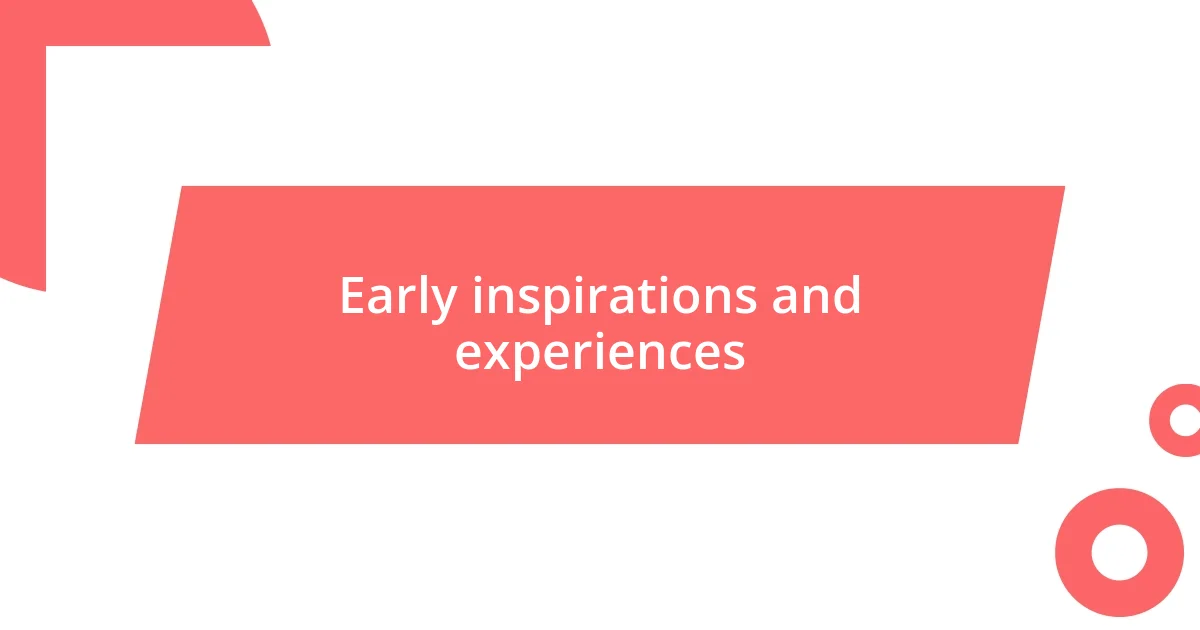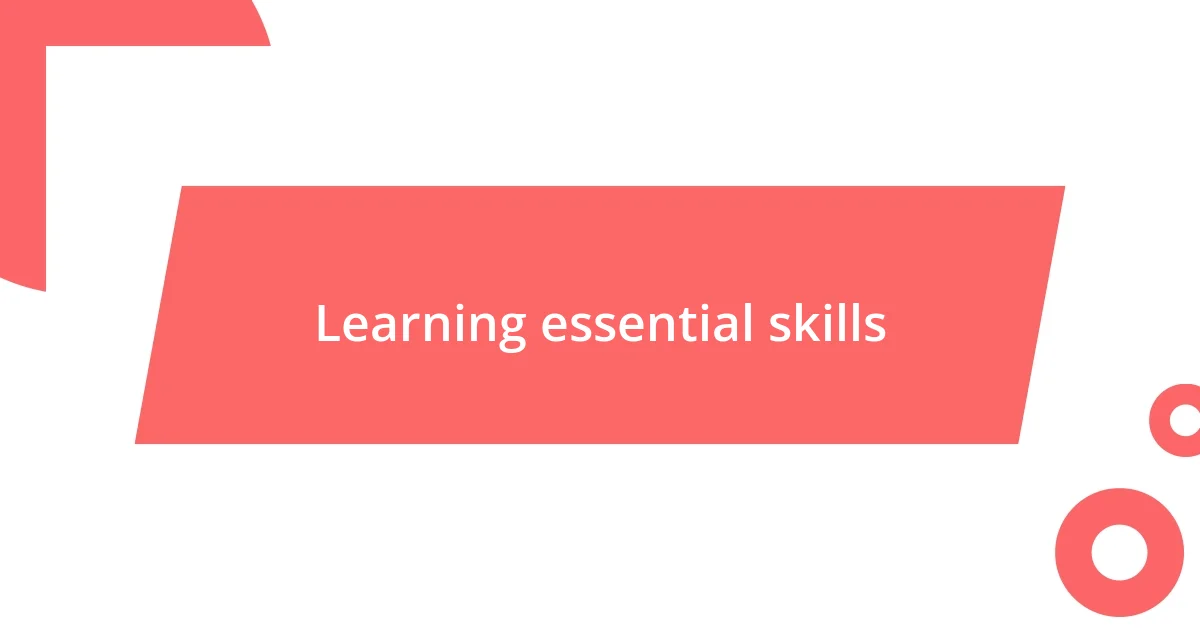Key takeaways:
- Early influences, such as childhood sketching and theater club participation, sparked a passion for set construction and emphasized the importance of teamwork and attention to detail.
- Essential skills in set construction include technical proficiency, creative problem-solving, and collaboration, all vital for overcoming challenges and fostering innovation.
- Reflecting on project outcomes highlights the need for balancing artistry with functionality, using feedback to inform future designs and cultivate growth in the craft.

Introduction to set construction
Set construction is a fascinating blend of creativity and technical skill, transforming abstract ideas into tangible environments. I remember my first time stepping onto a set that I helped build. The rush of seeing my hard work materialize into a vibrant scene was unlike anything I had experienced before.
Every project presents unique challenges and opportunities for innovation. Have you ever pondered how a simple scene can evoke complex emotions? I’ve learned that each detail, from the color palette to the texture of the props, plays a pivotal role in storytelling.
The process involves collaboration with various departments, making it a dynamic and exciting field. I find it exhilarating to brainstorm with other artists and technicians, all driven by a shared vision—it’s a dance of ideas that brings everyone together. Isn’t it fascinating how these collaborations can lead to groundbreaking concepts?

Early inspirations and experiences
I remember my childhood days, often sketching my favorite scenes from movies and dreaming about how they were constructed. It was that simple act of drawing that sparked my curiosity. Each line and shadow represented a potential world I could create, igniting my passion for set construction. That fascination followed me, urging me to explore how imagination translates into physical environments.
In high school, I had the chance to join a theater club, and that’s where everything changed. My first role was assisting in building the set for a school play. I recall hammering away, covered in sawdust, and feeling a sense of accomplishment when we unveiled our creation. The thrill of working together as a team brought a wave of joy. There I was, breathing life into the stage, and I knew this was my path.
Over the years, I’ve realized the significance of those early experiences. They taught me resilience and the importance of meticulous attention to detail. I recall one project where a single color choice transformed the entire scene’s mood. It was a revelation that the smallest decisions could yield profound impacts. Those moments shaped my understanding of storytelling in ways that words alone couldn’t capture.
| Experience | Impact |
|---|---|
| Childhood Sketching | Sparked curiosity and imagination |
| Theater Club Set Building | Developed teamwork and hands-on skills |
| Color Choice Revelation | Realized power of details in storytelling |

Learning essential skills
Learning essential skills in set construction has been a transformative experience for me. I can’t help but highlight how crucial hands-on practice is in mastering any craft. The first time I attempted to operate a power saw, my heart raced with anxiety and excitement. It felt like stepping into uncharted territory. That early practice not only taught me the mechanics of the tool but also gave me a sense of ownership over my work.
As I honed my skills, certain key areas stood out to me as particularly important:
- Technical Proficiency: Understanding tools and materials is fundamental. Each tool has its own purpose and nuances, and mastering them is crucial.
- Creative Problem-Solving: No project goes exactly as planned. I’ve learned to embrace these challenges as opportunities for innovation.
- Collaboration: Working seamlessly with a team enhances creativity and efficiency. Our collective ideas often lead to unexpected breakthroughs.
Additionally, I remember a moment during build week for a large production when every team member’s skill shone through. We had to pivot when a critical piece of the set didn’t arrive on time. Instead of panicking, we pooled our creativity, crafted a temporary solution, and ended up with an even more dynamic scene. Those challenges crystallized for me the essence of adaptability, and that’s an invaluable skill in this field.

Techniques for effective design
When it comes to effective design in set construction, I’ve discovered that iteration is key. I can’t tell you how many times I went back to the drawing board, refining concepts until they felt just right. One memorable project had me sketching and re-sketching a backdrop five different times before I landed on a design that captured the essence of the story perfectly. Have you ever felt that rush when everything clicks into place? That’s the magic of honing a design through exploration.
Another technique I value is creating a mood board. It’s a tangible toolkit of colors, textures, and images that inspire and guide the design process. On a recent project, curating a mood board helped my team visualize our ideas and keep everyone aligned. That moment when everyone comes together around a board, sharing thoughts and adding their flair, creates an energy that fuels creativity. It’s exhilarating to watch concepts spring to life in that collaborative atmosphere.
Finally, I can’t stress enough the importance of scale and proportion. It’s one thing to envision a structure on paper, but I’ve learned the hard way that translating that into three-dimensional space can be tricky. In my early days, I misjudged the size of a set piece, and it ended up dwarfing the actors. The lesson? Always mock up smaller versions, or even scale drawings, to ensure your vision accurately fits the intended space. These techniques have woven themselves into my design philosophy, making each project not just a job, but a thrilling adventure.

Collaborating with a creative team
The beauty of collaborating with a creative team lies in the diversity of ideas that each member brings to the table. I vividly remember a brainstorming session where we had a mix of backgrounds—set designers, lighting technicians, and even an actor. It was fascinating to see how each perspective influenced our approach to a single set piece. Have you ever experienced that moment when a team’s collective input sparks an idea you never considered? It’s truly exhilarating.
In my journey, I’ve found that communication is paramount. During one intense project, we encountered a major setback. As tensions rose, I suggested we pause and openly share our thoughts. That moment of vulnerability opened the floodgates for solutions, leading us to a fresh design that united our strengths. Trust me, fostering an environment where everyone feels safe to express their opinions transforms stress into collaboration.
I also learned the importance of flexibility in teamwork. There was a time when I had my heart set on a particular design, but the team felt it didn’t resonate with the play’s tone. Initially, I resisted the change, but after listening to their insights, I realized they were right. That experience taught me that collaboration isn’t just about sharing ideas; it’s about being open to evolving them together. So, when you work with a creative team, how do you balance your vision with the collective creativity? It’s all part of the exhilarating ride that is set construction.

Reflecting on project outcomes
Reflecting on project outcomes offers a unique snapshot of what truly worked and what didn’t. After one particular production, I found myself analyzing the feedback from our audience and cast. It hit me—what I saw as a success might have felt entirely different for the performers. Have you ever had that moment of realization where the creative vision you held tightly was contrasted by someone else’s experience? It can be a bit humbling, but it’s essential for growth.
I remember wrapping up a set design for a musical and feeling a mix of pride and uncertainty. The color scheme was vibrant and lively, mirroring the energy of the performances. However, backstage, I noticed actors struggling with visibility and space to move freely. Reflecting on that, I asked myself: how could I have integrated functionality more effectively with the vibrant aesthetic? Looking back, I see how crucial it is to maintain balance in every project—between artistry and practicality.
Each project’s outcome inevitably shapes my approach to future endeavors. I often jot down key takeaways in a journal, creating a repository of lessons learned. One time, I documented a flaw in a backdrop that wasn’t sturdy enough and led to some mishaps during a performance. It wasn’t just a setback; it became an opportunity for me to rethink materials and techniques. By embracing these reflections, I’ve cultivated a deeper understanding of the art of set construction. How do you ensure your reflections guide your next steps? It’s a continual journey of evolving creativity and resilience.













